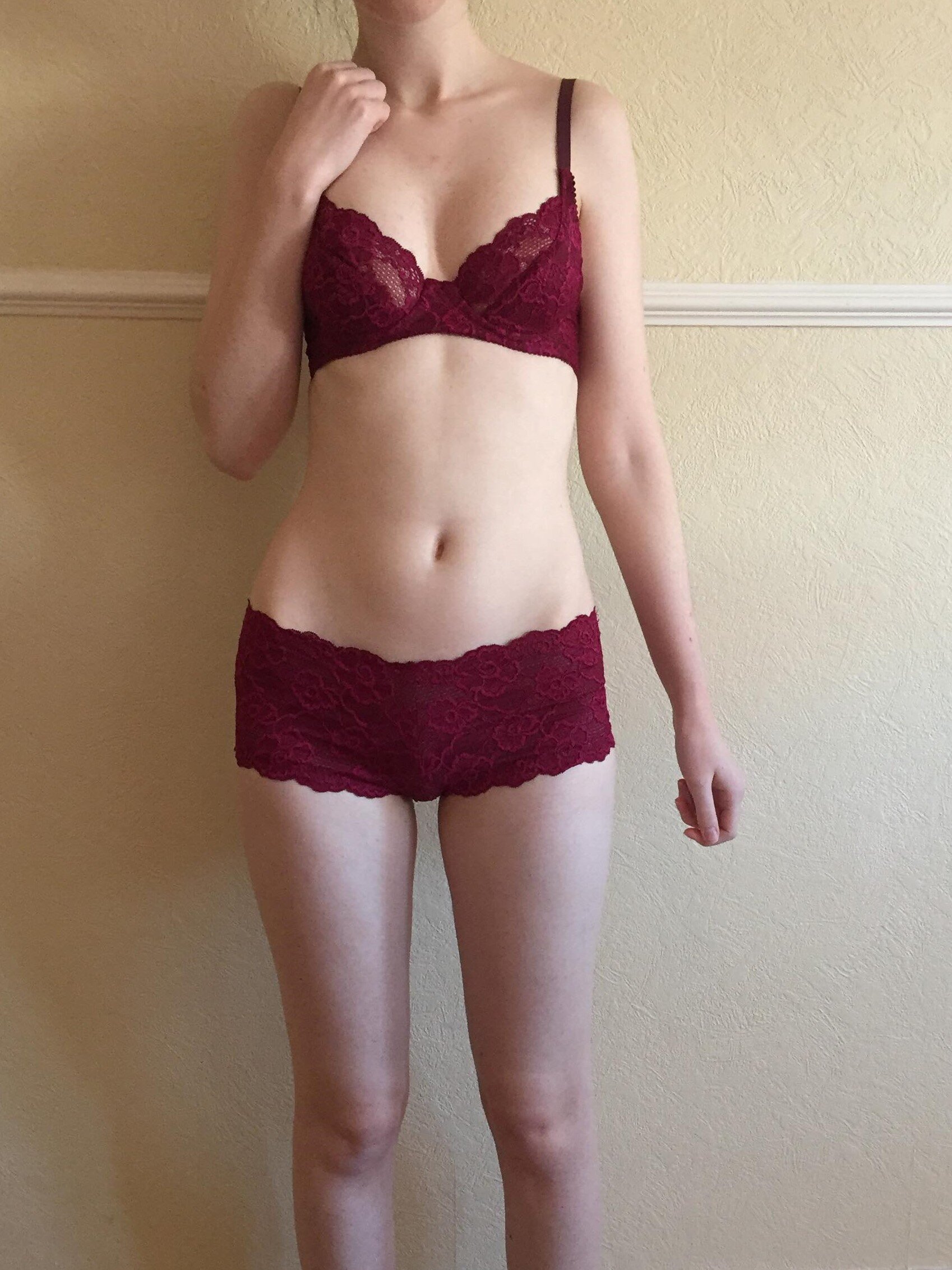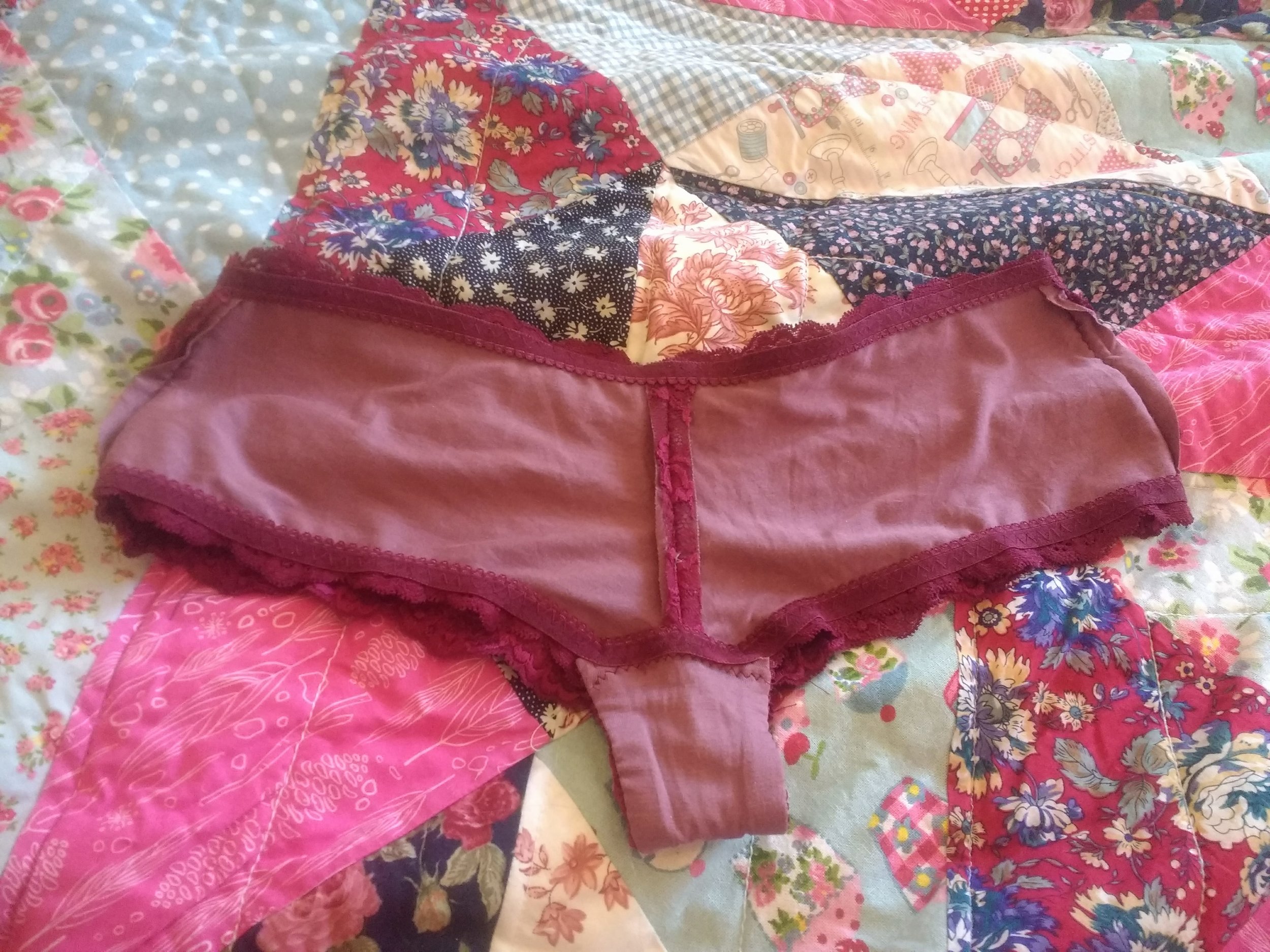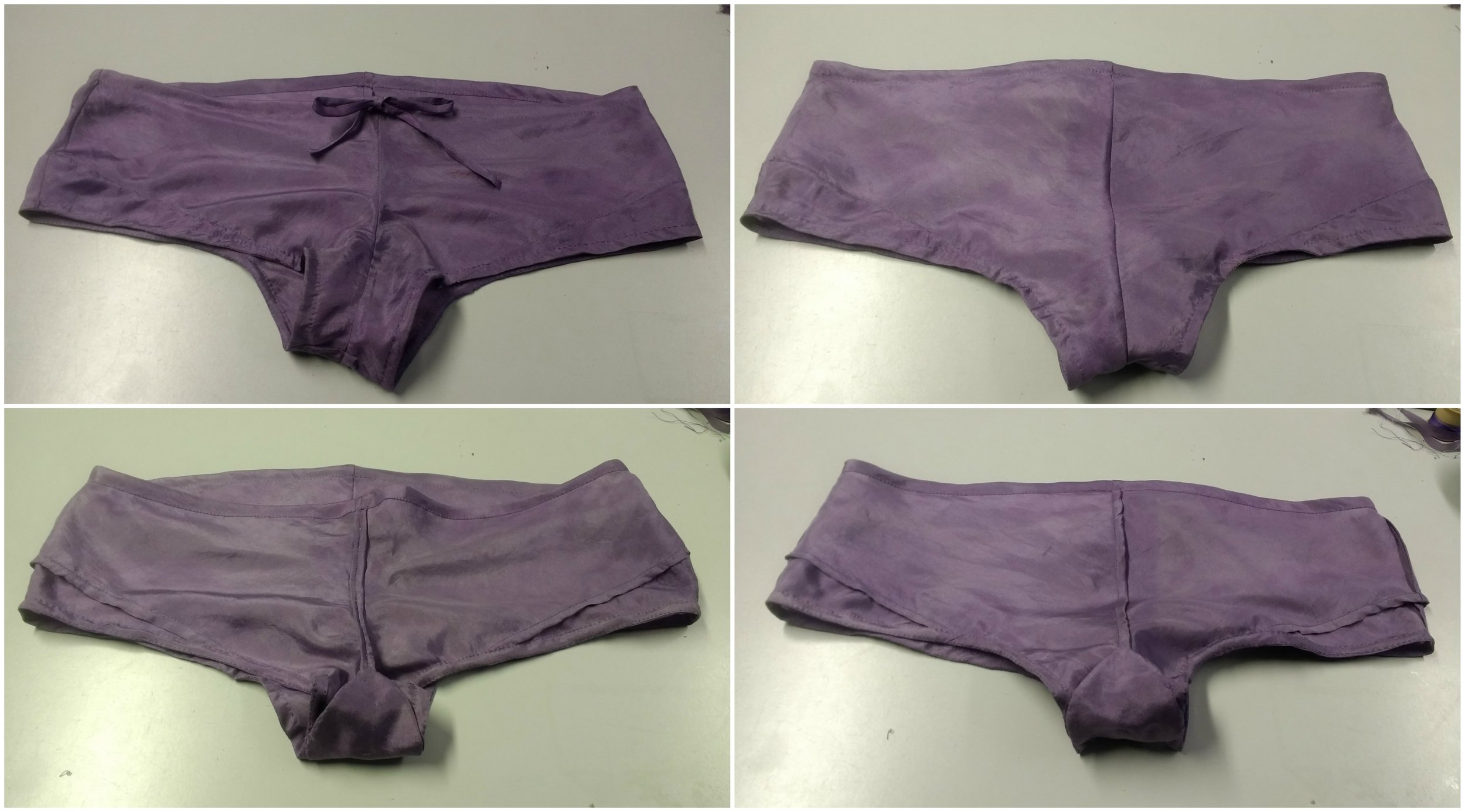Hello all! Today I have a new underwear set to share with you. I'm going to call this my first 'proper bra' because I've only previously made bralettes and this is my first time making an underwired bra.
I went to Amsterdam in September, and a big motivator behind the trip was getting to go to the lingerie fabric shop there. I ended up walking about an hour and a half out of the city centre to get there and almost got blown away by the wind but it was worth it when I found the shop and the treasures it contained within. I spent a long time looking through all of the fabrics for 'the one' and this dark pink-purple stretch lace was the winner. It was however, very hard to match everything else. The straps were the closest match that I could find, and a purple powermesh was the best match for the lining and band.
I was given the Cloth Habit Harriet Bra pattern for my birthday so there was no excuse but to start making! I measured myself as a 28B (which is my regular size) and got cracking. I quickly established that the bra cups were too small, remeasured and cut out the 28D cups. I left the band as it was to save fabric, but next time I'd cut out the 28D all round. I'm not going to lie, it was very exciting to have to size up to a D cup and I told all of my friends.
After I cut out the larger cup size everything went together swimmingly. Below you can see the insides. I love how neat the finish is, but I wish I'd bought matching channeling in Amsterdam. I did buy rings and sliders while I was there, but I can't find them now so just sewed the straps straight onto the bra. I might add some metal rings and sliders later. The only alteration I made to the pattern was to cut the back band out in laces as well, as I wanted the entire bra to be lace.
For the pants I wanted the scallops on the waist and leg holes but wasn't quite sure how to go about it as it's quite a narrow lace. I ended up cutting out some boy short type things but the lace was too narrow and they sat far too low. I took a chance and added a gusset which actually did the trick perfectly.
I lined the pants completely with viscose jersey scraps left over from a minerva project because I wasn't a fan of the concept of see-through pants. Although the scalloped edges are obviously already finished I wanted to stabilize them with some elastic and figured out an ingenious way to also enclose the gusset seam allowance within that (shown below). The elastic also did the trick of securing the lining.
So that's my new set of underwear! This is actually the first underwire bra I've ever owned, so I'm looking forward to taking it out for a test run and seeing what I think to it. As a first impression, I'm so impressed at how flat the bridge sits, which is obviously thanks to the underwires. The pants are also a bit of a new style for me so we'll see how comfy they are in comparison to my normal ones. I have some lace and elastic left over but not enough bra strapping so I think I'll make another pair of pants to match the bra. Maybe in a more standard brief style though.
Thank you very much for reading and to Abby for taking the pictures!
Lauren xx































